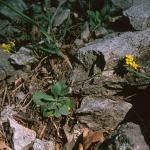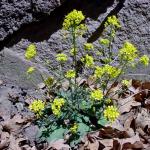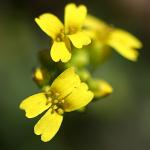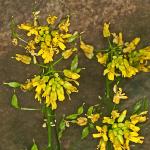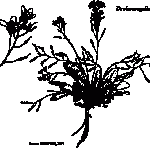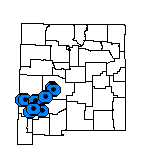Draba mogollonica (Mogollon Whitlowgrass)
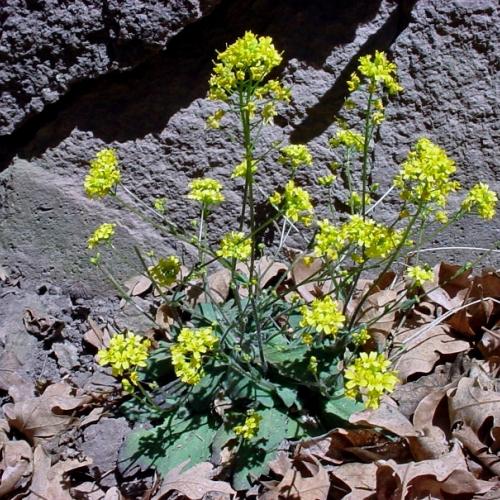
| USFWS | State of NM | USFS | BLM | Navajo Nation | State Rank | Global Rank | R-E-D Code | NMRPTC Status | Strategy Status |
|---|---|---|---|---|---|---|---|---|---|
| S3 | G3 | 1-1-3 | R | SS |
| Overall Conservation Status | Documented Threats | Actions Needed |
|---|---|---|
| WEAKLY CONSERVED | No Information |
document rarity |
|
Draba |
LONGEVITY |
CROWN/STEM |
STEM TRICHOMES |
BASAL LEAVES |
CAULINE LEAVES |
FRUITING PEDICELS |
STYLES |
|
mogollonica |
annual/ biennial |
tap rooted; no marcescent leaf bases |
simple below; glabrous above |
flat rosette; 4-9 cm long |
1-3, reduced |
widely spreading, 1-2 cm long |
1-2.25 mm |
|
petrophila |
perennial |
marcescent leaf bases; stems relatively stout |
cruciform to dendritic |
numerous; 3-8 cm long |
3-30, usually overlapping |
4-12 mm |
1.5-3 mm |
|
standleyi |
perennial |
marcescent leaf bases; stems very slender |
simple or forked & glabrous above or all glabrous |
tufted; 1.5-8 cm long |
1-8, reduced, remote |
erect to divaricately spreading, 8-13 mm |
1-2 mm |
*New Mexico Native Plants Protection Advisory Committee. 1984. A handbook of rare and endemic plants of New Mexico. University of New Mexico Press, Albuquerque.
Greene, E.L. 1881. New species of plants from New Mexico. Botanical Gazette 6:157.
Rollins, R.C. 1993. The Cruciferae of continental North America. Stanford University Press, Stanford, California.
For distribution maps and more information, visit Natural Heritage New Mexico

